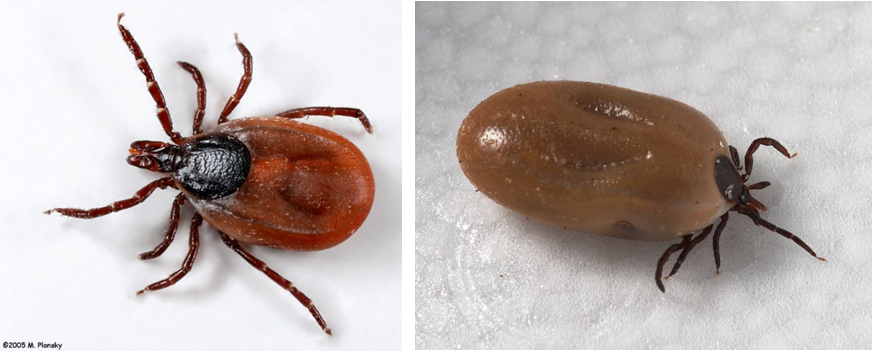Last week I started my first week of butterfly monitoring. Some of my coworkers were finding ticks on themselves and I considered myself lucky that I had yet to experience an encounter, at least this year. One day, I sat down in my chair, touched behind my ear, and pulled off a dog tick. After experiencing the initial heebie jeebies, I disposed of the tick and accepted the fact that ticks were going to be a regular part of my summer.
At this time of year, if you spend time outside, ticks are inevitable. However, there are some ways to prevent ticks from latching on. Let’s start with the basics.
What is a tick and what does it do?
According to healthycanadians.gc.ca, ticks are small invertebrates that are between 1 and 5 mm in length when unfed. They feed on blood of people and animals, and although bites are painless, some species of ticks are carriers and transmitters of Lyme disease. As ticks feed, their bodies become engorged with blood, and the longer they have been attached, the more difficult it is to remove them. For this reason, it is important to take preventative measures, and to regularly check for ticks after spending time in their habitats.
What about Lyme disease?
In Ontario, Lyme disease is spread by blacklegged ticks (also known as deer ticks), which feed on the blood of infected animals such as deer, birds and rodents. Infected ticks can spread the disease to humans and other animals, mainly dogs.

Where are they found and how do you avoid them?
Ticks are found in long grass, and opportunistically gain access to people, dogs, and other animals. As they are small and inconspicuous, it is very easy not to notice them, unless you are looking. Luckily, there are some surefire ways to decrease your chances of finding one attached.
- Throw fashion to the wind. Wear light coloured clothing as it is easier to detect the ticks, long sleeved shirts, closed footwear, and long pants tucked into your socks.
- Full body checks. When you get inside, thoroughly examine yourself. Ticks like, warm, moist areas such as the groin, scalp, and armpits, so pay special attention to these areas.
- Wash them away. Shower or bathe within two hours of being in areas they typically inhabit.
- And don’t forget to check your pets.

What to do if one is found?
If you find a tick that has not begun to embed, you can simply brush the tick off. If it has begun to embed, take steps to remove it as soon as possible. For further information on Lyme disease, removing embedded ticks, identifying blacklegged ticks, and submitting ticks for Lyme disease testing, visit http://healthycanadians.gc.ca/diseases-conditions-maladies-affections/disease-maladie/lyme/causes-eng.php
By: Allie Abram, rare’s Ecological Monitoring Intern

Ugh. I hope I don’t get one!
LikeLike